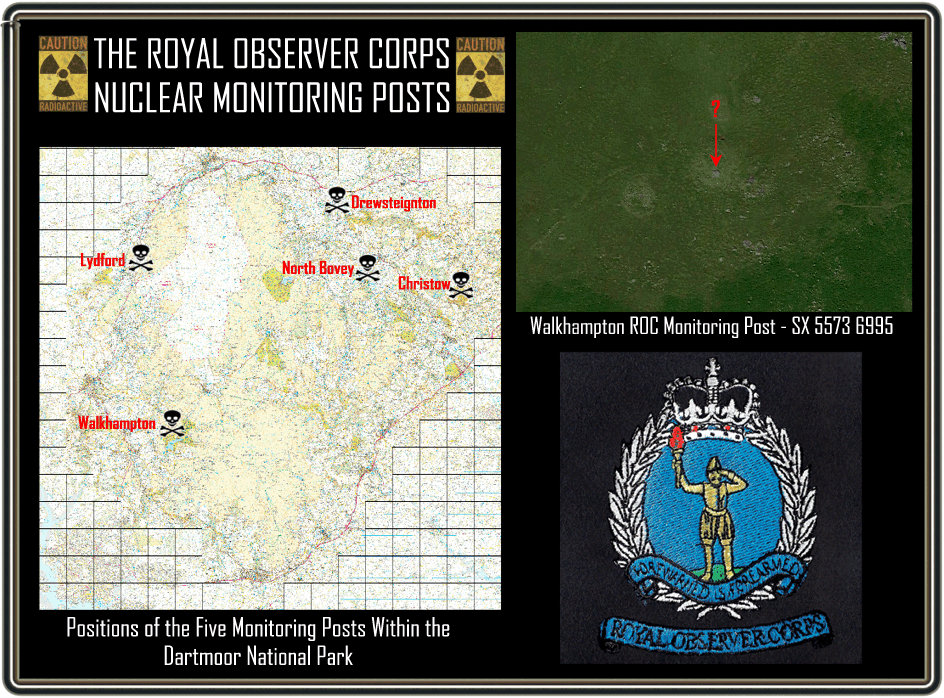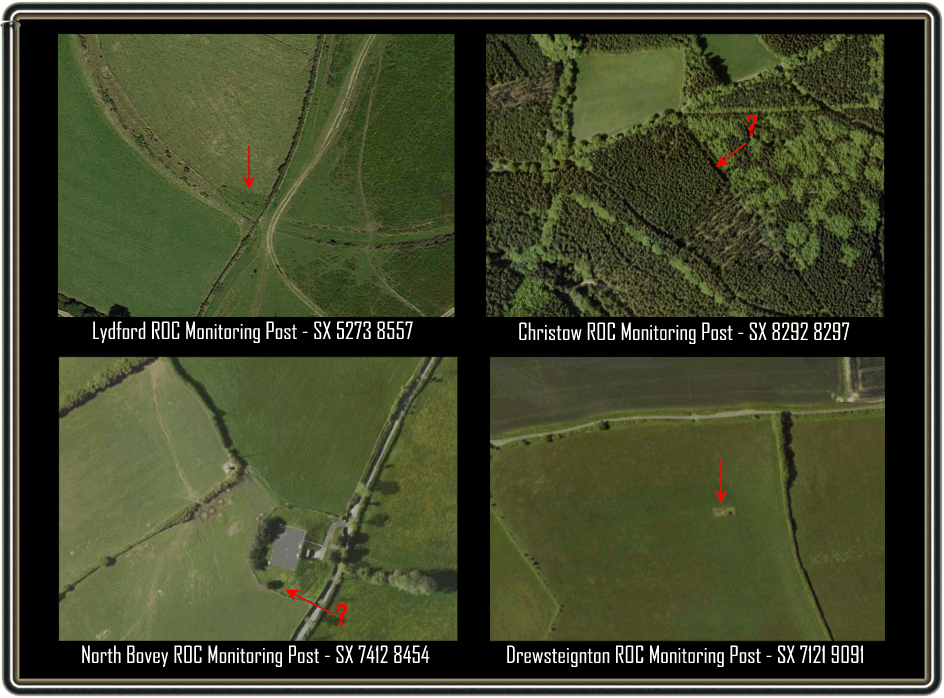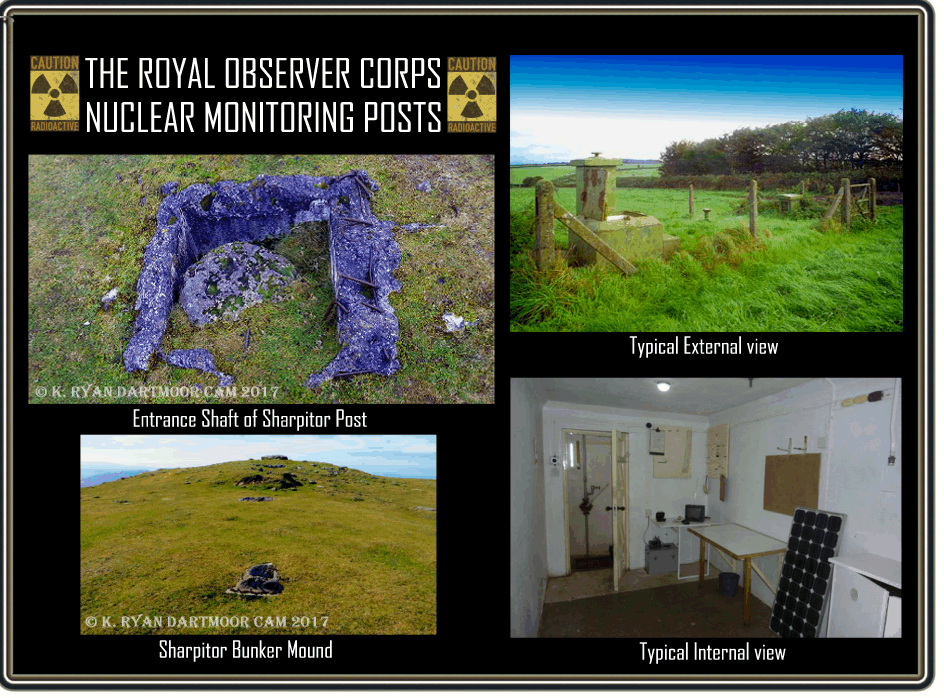
“I grew up during the Cold War, when everything seemed tenuous. For many years, right up until the fall of the Berlin Wall, I had vivid nightmares of nuclear apocalypse – Justin Cronin.”
Monitoring Posts were underground structures which were placed at strategic locations across the United Kingdom. Their purpose was to serve as a Cold War nuclear reporting installation which were manned by volunteers from the Royal Observer Corps between 1955 and 1991. Monitoring Posts were in the main constructed to a standard design which included a deep access shaft which led into the monitoring facility and a toilet come store room. Internally the post measured fifteen and a half feet long and just over seven feet in width and height. Power for the installation was provided by 12 volt batteries located inside the post. The batteries were charged by means of a petrol generator located outside the post. Where possible it was desirable for each post to be located within seven to ten miles of each other. The main functions of the Royal Observer Corps during this period were five-fold, firstly to warn the public of any air attack albeit nuclear or conventional. Secondly to give confirmation of a nuclear attack and then alert the public of any. approaching nuclear fallout. Following a nuclear attack meteorological data was to be gathered in order to predict the fallout and finally to assess the path and intensity of the fallout.
The construction of the network of posts was overseen by the Works Department of the Air Ministry and the Royal Observer Corps with the actual construction work being carried out by local contractors. Initially the Home Office wanted one hundred posts constructed in 1957 and then two hundred and fifty every following year. This was a ambitious target as proven by the fact that by the summer of 1958 only ninety four posts had been completed with a further one hundred and ten posts still under construction.
Once a suitable location had been selected the first task was to excavate a nine foot hole inside which a structural skin of reinforced concrete was cast. Then the actual post was constructed, once again from concrete with walls which were seven inches thick, the floors twelve inches thick and the roof eight inches thick. The entire structure was then sealed with a bitumen skin in order to make the post waterproof. The next stage was to build a mound over the post which was made from tightly compacted earth, into which two shafts were inserted. At one end of the mound was an access shaft which also served as an air shaft. At the opposite end of the mound another shaft was sited, this consisted of two metal pipes, one with a diameter of five inches and the other one inch which again acted as air shafts. Above ground the air vents were protected with a covering of downward sloping louvres whilst below ground sliding metal shutters controlled the air flow in the event of a nuclear fallout. It was estimated that with the combination of the earthen mound and the concrete roof any external radiation would be reduced by a factor of 1,500:1. Depending on the circumstances of each post the cost of each post ranged from anything between £1,000 and £8,000.
Should a nuclear event ever occur members of the Royal Observer Corps would have to man the posts for a minimum of seven days, if the situation was severe this period could extend to a fortnight or more. Luckily the nuclear threat never came and members of the Royal Observer Corps were never asked to spend long periods underground. At the best of times conditions in these posts was cramped, cold and sometimes damp. Later years saw an attempt to improve conditions by insulating the concrete walls with polystyrene tiles and adding rubber matting made from National Coal Board conveyor belts on the floor.
By 1968 around fifty percent of the Nuclear Monitoring Stations had been closed due to the Royal Observer Corps being reorganised into a greatly reduced organisation. Over the next forty years or so other posts were closed because of structural damage caused by flooding and vandalism. Following the collapse of Communist Russia in 1991 all remaining active posts were closed and the Royal Observer Corps stood down.
Within the boundary of the Dartmoor National Park there are five locations where ROC Nuclear Monitoring Posts were located as can be seen above. They are in the parishes of: Christow, Drewsteignton, Lydford, North Bovey and Walkhampton. Others were sited just outside the park’s boundary at Sourton and Ashburton.
Christow.
Located in a small clearing in the Barton Down Plantation on the eastern side of the forest track just 200 yards south of the road running from Trenchaford Reservoir to Lower Ashton. This installation was first opened in the September of 1960 and was decommissioned in the September of 1991 – (Ordnance Survey Grid Reference. – SX 8292 8297).
Drewsteignton.
Located in a large rectangular compound some 100 yards south of the road running from Whiddon Down to Drewsteignton and is just NNE of Stone farm. During the Defence of Britain Survey taken between 1995 and 2002 this post was said to be in ‘fair condition’ with the surface feature intact. It was opened in the August of 1960 and closed in the September of 1991. – (Ordnance Survey Grid Reference – SX 7121 9091).
Lydford.
Located in the south west corner of a triangular field which is just above the track running from the Dartmoor Inn down to High Down Ford. This installation was opened in the December of 1960 and closed in the September of 1991 – (Ordnance Survey Grid Reference – SX 5273 8557).
North Bovey.
The location of this post is uncertain but is somewhere in the vicinity of the reservoir which sits alongside the road from North Bovey to Bovey Cross and is possibly in the north east corner of a field? It was opened in the June of 1959 and closed in the October of 1968 thus making it the earliest of Dartmoor’s posts to be closed – (Ordnance Survey Grid Reference – SX 7412 8454?).
Walkhampton.
Located SSW of Sharpitor just off the summit of Peek Hill in open moorland. This was the earliest of Dartmoor’s post and was opened in 1957 and closed in 1991. Many of the features are visible today including the mound with its air vent and entry shaft which have now been sealed with sand and stones. – (Ordnance Survey Grid Reference – SX 5573 6995).
 Legendary Dartmoor The many aspects past and present of Dartmoor
Legendary Dartmoor The many aspects past and present of Dartmoor



